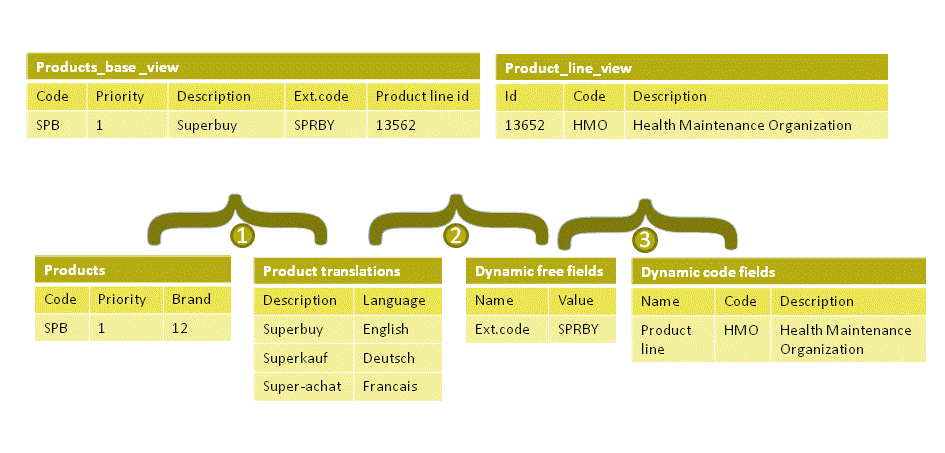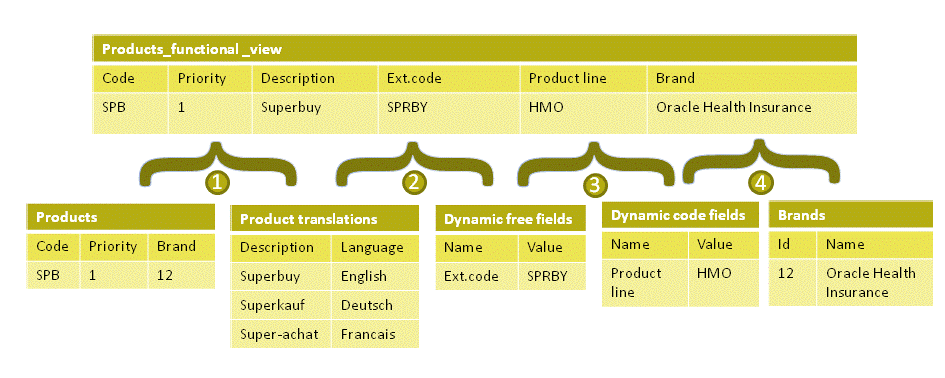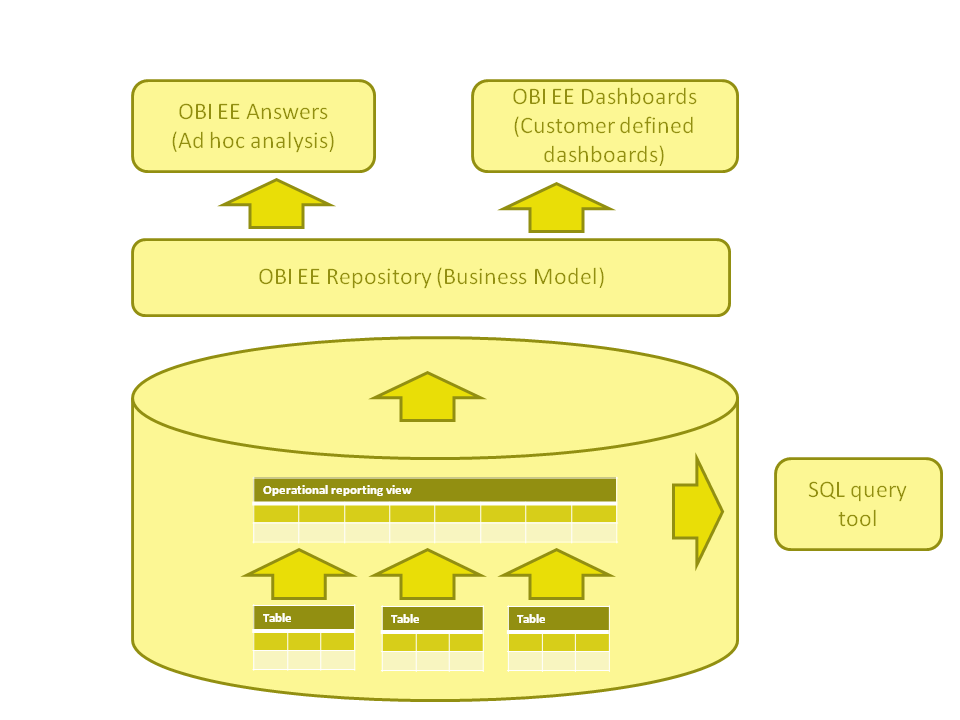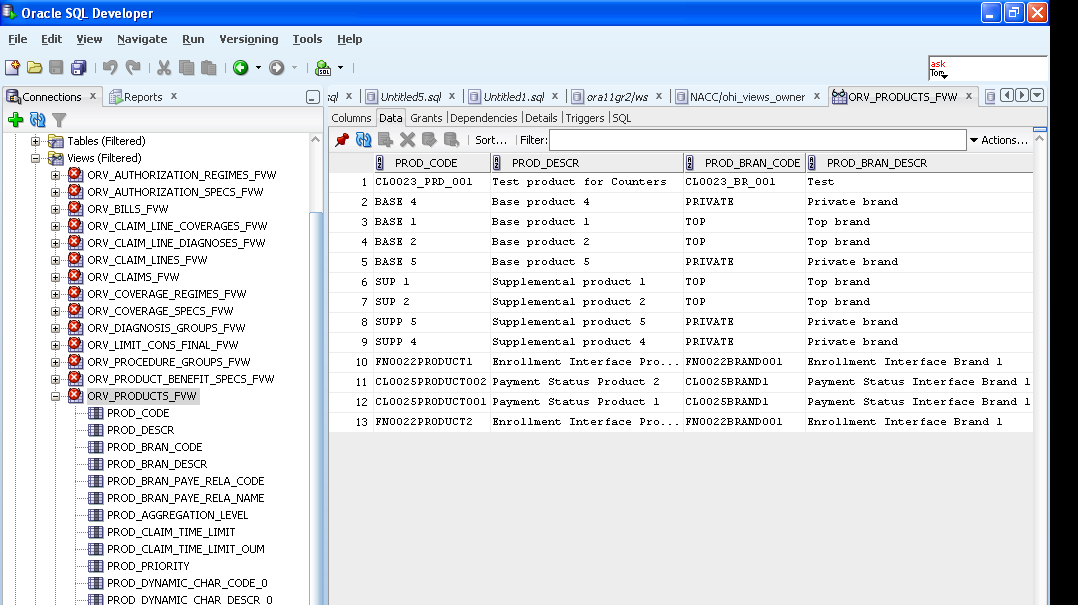Reporting Views - Overview (Deprecated)
| The reporting views in this section are deprecated. They are replaced with the base views described in Overview. |
Reporting views allow a user to report over a limited set of data, without knowing the technical details of the Claims datamodel. There are 2 types of reporting views
-
Base views
-
Functional views
Base views are provided for each entity in the Claims data model. Functional views are provided for a select number of entities.
Base Views
Base views provide the following structural transformations.
Resolve Translation Tables
The Claims data model provides the ability to store multilingual descriptions for many entities. This for instance enables the user to store and show the description of a product in English and Spanish. The numeric data and the translatable data are stored in two different database tables. In the base views these two tables are joined and the description of a record is shown in one, default, language. This is depicted as (1) below
Resolve Dynamic Fields
The dynamic fields are resolved in the following way:
-
Single valued, non time valid, free fields are shown as columns in the view. This is depicted as (2) below.
-
Time valid free fields, multi valued free fields, dynamic records and flex code fields are made accessible by a providing a link to another view that contains the values. This is depicted as (3) below.

Functional Views
Functional views provide the following features
-
resolution of translation tables. This is depicted as (1) below.
-
resolution of single valued free fields This is depicted as (2)
-
resolution of single valued code fields. This is depicted as (3)
-
resolution of first order lookups. For tables to which the base table refers using a numerical id a number of descriptive columns is shown in the reporting view. This is depicted as (4)

Using the Reporting Views
The data in the reporting view can be accessed in a number of ways:
-
Using Oracle Business Intelligence Enterprise Edition
-
Using any SQL query tool

Oracle Analytics Server
Oracle Analytic Server is an application to view or create content such as, augmented analysis, data visualisation, or reports. The BI Composer is a wizard within the application that creates analysis based on a query. The BI dashboards provide a work area to add analysis or prompts.

Usage Guidelines
The reporting views are by no means a substitute for a data warehouse. Querying the reporting views does put a load on the environment where the reporting views are situated. If the reporting views are situated on the production environment then querying the reporting view will put a load on the product environment. Using the reporting views to query large amounts of data could lead to a performance decline of other tasks running on the same server.
Guidelines
-
Do no not use the reporting views to report over large sets of data, containing more than 1000-2000 records
-
Do not use any non indexed columns as the selection criteria to select a data set. This translates to always use the reporting views to report over the claims or claim lines for 1 person or object, 1 provider, 1 procedure.
Base Reporting Views
The base reporting views are distinguished in 'confidential base reporting views' and 'non confidential base reporting views'. The 'confidential base reporting views' contain data or details of the following entities
-
claims
-
authorizations
The 'confidential base reporting views' do not implement the access restrictions that are defined by the user roles. This means that every database user who has access to the 'confidential base reporting views' has access to all claims and authorization data, that can be considered confidential.
The 'non confidential base reporting views' are all the base views that do not contain claim or authorization data or details thereof.
Functional Views
The functional views, that contain data related to claims and authorizations, are access restricted using the role of the user that accesses the views. This means that the user can only see the claims and authorization data that he/she can also see using the User Interface.
Retrieval Auditing
Retrieval auditing is not implemented in the reporting views. Retrieval auditing at the database level can be achieved by means of the standard Auditing database feature.
List of All Functional Views
The following functional views are provided. For a detailed description see the chapter on functional views.
| Reporting view |
|---|
Claims |
Bills |
Claim lines |
Claim line coverages |
Limit counter consumption |
Products |
Product benefit specifications |
Benefit specifications |
Regimes, not including the details of regime such as tranches, periods and cover withhold rules. |
Procedure groups, not including individual procedures |
Diagnosis groups, not including individual diagnoses |
Provider groups, not including organization providers or individual providers |
Episode details |
Claims lines not in any episodes |
